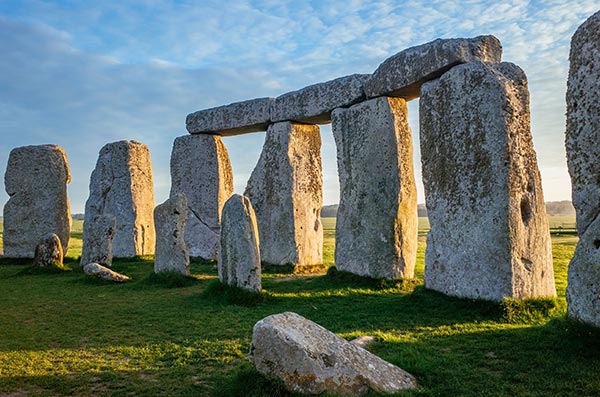Researchers find “underwater Stonehenge” beneath Lake Michigan
07/06/2021 / By Cassie B.

The prehistoric monument Stonehenge is still largely mysterious to archaeologists and historians, and now it looks like the U.S. has a stone-based mystery of its own to solve.
Multiple sightings of stones underneath Lake Michigan have spurred researchers to explore the lake’s bed and analyze the rocks found there, and they found a very interesting formation that is drawing comparisons to Stonehenge. Although they are said to form a perfect geometric shape, they are not stacked or connected the way Stonehenge is.
Archaeologists say that prehistoric tribes roamed the Great Lakes area for thousands of years, although not much is known about them. Some of the first Native Americans to inhabit the area surrounding Lake Michigan are the Anishinaabe, and some of their descendants believe the stones were laid for sacred purposes.
Roughly 10,500 years ago, the water level in the basin of Lake Michigan dropped and remained at a lower level for around 3,500 years; the water levels did not rise and fill the basin again until 5,000 years ago. While the area was dry, it was inhabited and was likely a desirable living space thanks to its proximity to the water.
Researchers used stereophotogrammetry to create a 3D model from 2D photos taken during dives of the lake bed. The stones all measure the same distance across, which is something that would be highly unlikely in a natural formation. It also resembles structures found in France and England.
One of the rocks had carvings in it that resemble a mastodon. This ancient ancestor of the wooly mammoth and elephant was one of the biggest land animals to roam North America.
The curator of the University of Michigan Museum of Anthropological Archaeology, Dr. John O’Shea, said that the rock formation and sketch could indicate this was an ancient hunting structure known as a drive lane. These were used by hunters for herding large groups of animals along set paths to a kill zone where hunters awaited them.
Complex prehistoric hunting structure found under Lake Huron
It’s a very exciting finding, but for many archaeologists, the true wonder lies in neighboring Lake Huron. An area that is the size of a football field was found 120 feet below the surface with 9,00o-year-old artifacts and human-constructed stone structures in what is considered the most complex prehistoric hunting structure to ever be found underneath the Great Lakes.
Dr. O’Shea, who has researched the underwater sites in Lake Huron, told Discover Magazine: “It’s a Pompeii-type situation. Everything is totally preserved in cold, clear freshwater. You don’t get that often in archaeology.”
These structures were built at a time when glacial ice sheets still extended south from the North Pole and the water level was far lower than it is now. With the Great Lakes sitting 300 feet below their current levels, far more land was exposed than we can see right now. The shorelines were teeming with wildlife and greenery, making the area very attractive to humans.
A narrow land bridge that stretched across the lake diagonally, connecting what is now Ontario to northeast Michigan, was very advantageous to early hunters who ambushed caribou. O’Shea and his team have found the stone lines and hunting blinds they used in a 300-foot ambush area. The artifacts are situated so deep that they have not been impacted by ice, waves, sand or algae.
“I’ve seen campfire rings with charcoal still inside them, stone tools, and even rings that were used to stake down the edges of a tent or tipi.”
There is so much that we are still discovering about our planet, and it’s remarkable that what many people think of as “simpler times” remain so difficult for us to understand.
Sources for this article include:
Tagged Under: Ancient civilizations, ancient history, artifacts, discoveries, hunting, Lake Huron, Lake Michigan, research, rock formations, Stonehenge
RECENT NEWS & ARTICLES
COPYRIGHT © 2017 WEIRDSCIENCENEWS.COM
All content posted on this site is protected under Free Speech. WeirdScienceNews.com is not responsible for content written by contributing authors. The information on this site is provided for educational and entertainment purposes only. It is not intended as a substitute for professional advice of any kind. WeirdScienceNews.com assumes no responsibility for the use or misuse of this material. All trademarks, registered trademarks and service marks mentioned on this site are the property of their respective owners.




















